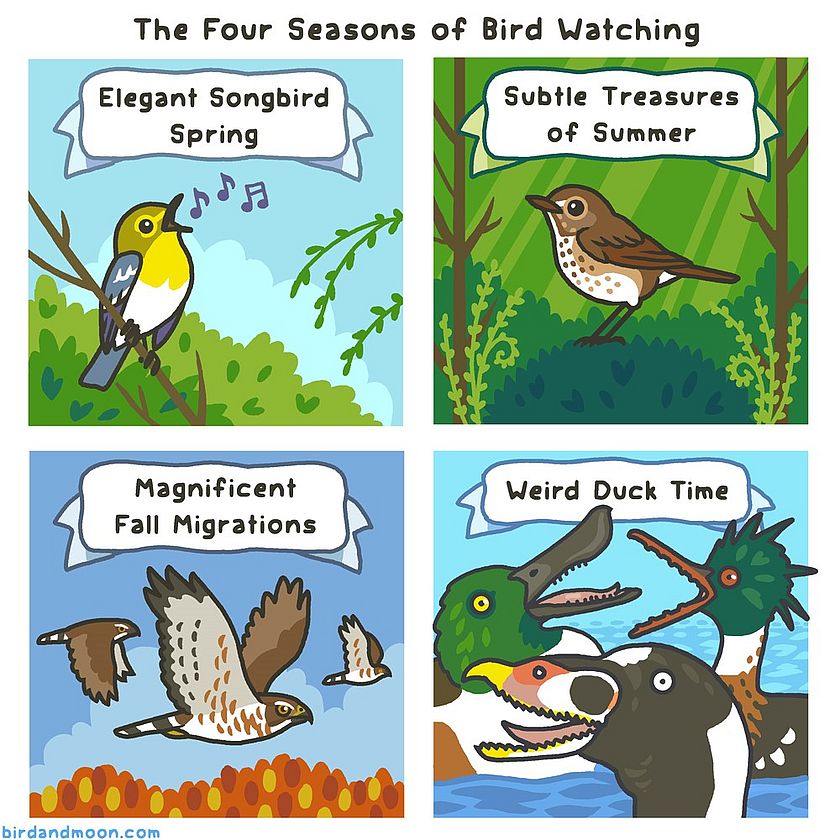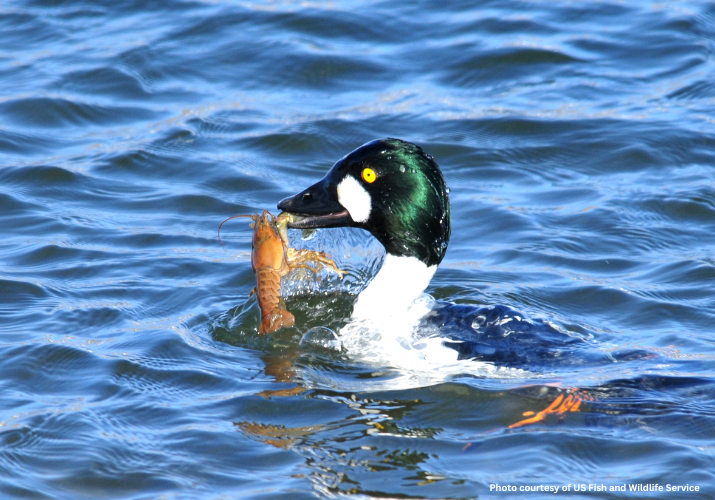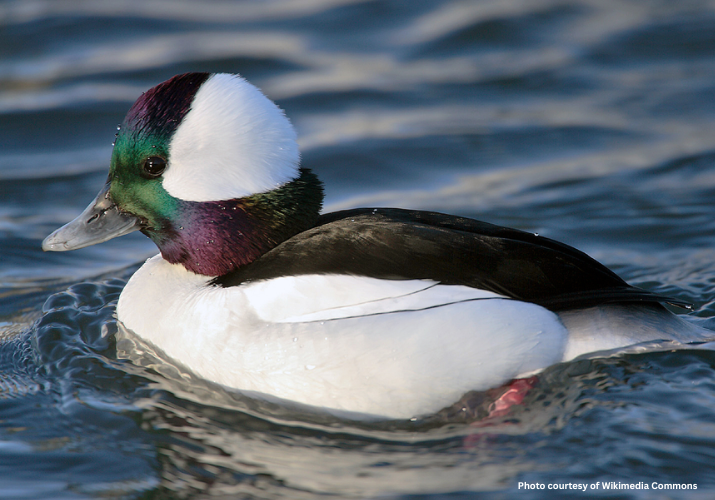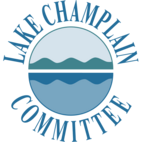Weird Duck Time on Lake Champlain
The changing of the seasons in the Lake Champlain Basin brings new wonders to the avian world. Cartoonist, writer, avid birder, and graduate of the University of Vermont’s Field Naturalist Program Rosemary Mosco broke down the four seasons of bird watching in the Northeast US: Elegant Songbird Spring, Subtle Treasures of Summer, Magnificent Fall Migrations, and the season we are now in—Weird Duck Time.

Weird Duck Time is characterized by the prevalence of different species of boreal ducks and other eye-catching waterfowl migrating south and congregating on the northern reaches of open water that is not yet frozen over. Lake Champlain is well positioned to host large populations of boreal waterfowl ducks due to its placement just south of the southern reaches of Canadian boreal forests, so we get some colorful visitors from our northern neighbors. Weird Duck Season is typically from late fall until March, excluding periods when the lake freezes over, as these birds require open water. Many species of ducks will choose their mate in the winter, and it shows: their bright plumage and unique shapes are on full display, sort of like the high latitude version of birds of paradise.
Common goldeneye—like their name implies—are among the most prevalent winter ducks on the lake. They catch the eye with their bulbous heads and intense yellow eyes that pop over black plumage with an iridescent green shimmer that mottles to white closer to their stomachs. In winter, great flocks gather in protected bays feeding and loafing (an adorable term for when ducks take midday rests between feeding and roosting). Later in winter and into early spring, the males’ mating display consists of an unhinged snap back of their heads as they let loose a quack that the Audubon Society describes as a “nasal ‘MEEP!’”. Large groupings of common goldeneye (which can number over 1,000 birds) may host the rarer Barrow’s goldeneye, the males of which can be distinguished from the former by the darker, purple plumage on their black heads and back, as well as by their shorter bills and flatter foreheads.

Another pair of similar species that are somewhat common on Lake Champlain are the greater and lesser scaup. Large rafts of scaup have been observed showing up near the Champlain Bridge. The rafts are a mix of greater and lesser scaup. Males in breeding plumage have a handsome two-toned look, white below and black above. Greaters are slightly larger than lessers, but the key distinguishing feature between the two species is the shape of their heads: smoothly rounded in greater, and with a small bump on the back in lesser. Both species of scaup are remarkably deep divers—greater scaups have been recorded diving over 23 feet under the surface for aquatic invertebrate snacks of mollusks or crustaceans
Bufflehead ducks are one of the smallest ducks on Lake Champlain. The name 'Bufflehead' is derived from 'buffalo-head,' for the male's odd puffy head shape. Their face, neck, and back are black with a rainbow iridescence in the right light, and their puffy head and stomachs are white. They rhythmically bob their heads and flash their wings to attract a mate, and unlike most other duck species, they are mostly monogamous—buffleheads will remain with the same mate for several years.

While there are rarer weird ducks that avid birders seek during the season, common goldeneye, scaup, and bufflehead are some of the easier-to-spot odd ducks along Lake Champlain’s shorelines. To view Weird Duck Time this season, turn your attention to protected bays with less ice formation (so far for the 2023/2024 winter that is just about every protected bay). Particularly active waterfowling sites along the lake include the two points connected by the Lake Champlain Bridge: Crown Point in New York and Chimney Point in Vermont, where mixed species duck flocks can congregate by the hundreds and even thousands. The Port Henry Boat Launch Area and along the shore of the Essex Ferry in New York are other good spots—the latter has hosted a Greater Cormorant in the past. In Vermont, Delta Park in Colchester and the Missisquoi National Wildlife Refuge in Swanton have excellent wetland habitats for rarer duck species.
Lake Look is a monthly natural history column produced by the Lake Champlain Committee (LCC). Formed in 1963, LCC is a bi-state nonprofit that uses science-based advocacy, education, and collaborative action to protect and restore water quality, safeguard natural habitats, foster stewardship, and ensure recreational access. You can join, renew your membership, make a special donation, or volunteer to further our work.
